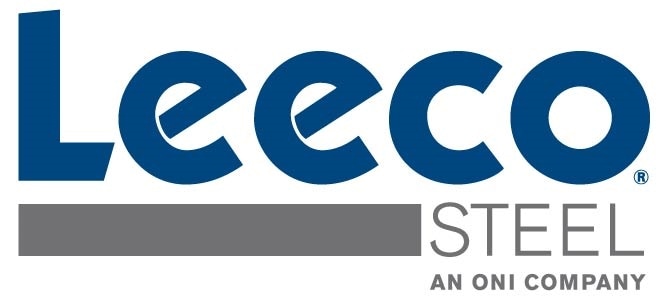Nov 27 2018
Steel is used across a wide variety of industries and is considered the backbone of modern-day infrastructure. The ability to add other elements and in doing so manipulate steel’s properties is what makes it such a widely-used resource. This article will look at the most common elements that comprise the wide range of steel grades and will explore their impact on material properties.
Iron Alone is Not Enough
In its purest form, iron is neither exceptionally strong nor hard - in fact, a block of pure iron could be cut with a knife. The addition of carbon and the removal of oxygen are what give iron-based steel its incredible strength.
An alloy is any metal made by combining two or more metallic elements. The addition of more metallic and non-metallic elements to iron and carbon enables the properties to be manipulated to suit a specific need or application.
Even changing the amount of carbon combined with iron can affect the material properties. High-carbon steel contains between 0.60% and 0.95% of carbon (as a percentage of weight) and is incredibly strong and hard but is less ductile and more difficult to machine and weld. As carbon content is reduced, the material becomes more like pure iron and so softer and more ductile.
The maximum carbon content in steel is 2.1% as anything more than that is not truly classified as steel. As carbon content is reduced the material falls into one of four categories:
1. Very High Carbon Steel (0.96%-2.1% Carbon)
High carbon steel is extremely strong and capable of resisting localized deformation under high tension. It is produced via a specialized process. As a result, machining, welding or bending this material is nearly impossible.
2. High Carbon Steel (0.55%-0.95% Carbon)
High carbon steel is quite strong and offers more ductility than very high carbon steels and until recently was used in railroad track applications. Other applications include chiseling and cutting tools.
3. Medium Carbon Steel (0.30%-0.54% Carbon)
Medium carbon steel balances strength and hardness with ductility and is used primarily in machine parts i.e. gears, bolts and axels.
4. Low Carbon Steel (0.05%-0.25%)
Low carbon steel provides incredible strength relative to a lower weight compared to other categories of steel. Adding alloys can give low carbon steel different properties without massively impacting weight.
Although all categories of steel can use alloys and non-metallic elements to alter their properties, this article will focus on how certain elements alter low carbon steel properties.
Elements that Harden
Before examining elements that harden, it is important to note the difference between hardening and strengthening.
Steel hardness refers to the level of impact a material can absorb before it dents and is typically measured by a Charpy impact test. Hardness can be greatly affected by temperature, because material can generally absorb less impact in colder temperatures.
On the other hand, steel strength focuses on yield point and tensile strength. A yield point is the point in which a material is stressed and deforms but does not break. Tensile strength is the amount of stress required for the material to fail or break.
Elements that harden steel increase the amount of impact that a material can absorb. The most common hardening elements are:
- Phosphorus*
- Silicon*
- Manganese*
- Nitrogen
- Nickel
- Chromium
- Boron
These hardening elements are common in tempered and quenched grades (e.g. ASTM A514 or ASTM A710), and offshore grades (e.g. ASTM A633). Nickel can be added to carbon steel alloys but it is more common in stainless steel grades.
*Phosphorus, silicon and manganese are the most common elements added to steel. ASTM A752-50 (a high-strength, low-alloy steel) and ASTM A36 (a mild steel) are two of the most widely-used grades in North America and contain these three elements.
Elements that Strengthen
Elements that strengthen steel increase the load that the material can bear. Consequently, it is common for these elements to be seen in infrastructure, such as roads, bridges and buildings. The most common strengthening elements are:
- Silicon
- Chromium
- Vanadium
- Phosphorus
- Titanium
- Nitrogen & Aluminium combo
- Niobium (Columbium)
These strengthening elements are common in quenched and tempered grades (e.g. ASTM A514) and high-strength, low-alloy grades (e.g. ASTM A656 and ASTM A5720-50).
Elements that Increase Ductility
In projects that require material drilling, welding, machinery or bolting, ductility is an important factor. Common elements added to steel alloys that improve ductility include:
- Niobium (Columbium)
- Sulfur
- Phosphorus
- Chromium
These softening elements are common in tempered and quenched grades (e.g. ASTM A514) and are used across dozens of others.
Elements that Resist Corrosion
Elements that promote corrosion resistance are critical to steel alloys for use in applications that require resistance to atmospheric conditions. Common elements used include:
- Zirconium
- Nickel
- Phosphorus
- Copper
- Chromium
Resistance to corrosion is important for structural steel used in outdoor applications for example bridges, and offshore or marine applications.
The Power of Chemistry
Iron and carbon are the simple building blocks of steel. However, a wide range of metallic and non-metallic elements can alter the properties and behavior of steel which makes it a viable resource for numerous applications.
Leeco Steel specializes in supplying carbon steel plate in the U.S, Canada and Mexico. A wide variety of alloy steel grades are available. After you determine the ideal steel grade for your project, you can get the steel plate you need, when you need it.

This information has been sourced, reviewed and adapted from materials provided by Leeco Steel, LLC.
For more information on this source, please visit Leeco Steel, LLC.